Theodore Roosevelt ventured into the American West to seek authentic frontier experience and the strenuous life. This book contains 70 stories, many set in Dakota Territory, about Roosevelt's life as an adventurer, politician, and man of letters, lavishly illustrated with more than 100 photographs, some never previously published. Clay S. Jenkinson's introduction assesses what Roosevelt learned from his sojourn in the West, including his commitment to conservation of America's natural resources. With a foreword by best-selling biographer Douglas Brinkley, this book tells the story of Theodore Roosevelt's life in his own words, carefully excerpted from his 1913 autobiography.
Kearny's March
In June 1846, General Stephen Watts Kearny rode out of Fort Leavenworth, Kansas, with two thousand soldiers, bound for California. At the time, the nation was hell-bent on expansion: James K. Polk had lately won the presidency by threatening England over the borders in Oregon, while Congress had just voted, in defiance of the Mexican government, to annex Texas. After Mexico declared war on the United States, Kearny’s Army of the West was sent out, carrying orders to occupy Mexican territory. When his expedition ended a year later, the country had doubled in size and now stretched from the Atlantic to the Pacific, fulfilling what many saw as the nation’s unique destiny—and at the same time setting the stage for the American Civil War.
Winston Groom recounts the amazing adventure and danger that Kearny and his troops encountered on the trail. Their story intertwines with those of the famous mountain man Kit Carson; Brigham Young and his Mormon followers fleeing persecution and Illinois; and the ill-fated Donner party, trapped in the snow of the Sierra Nevada. Together, they encounter wild Indians, Mexican armies, political intrigue, dangerous wildlife, gold rushes, and land-grabs. Some returned in glory, others in shackles, and some not at all. But these were the people who helped America fulfill her promise.
Distilling a wealth of letters, journals, and military records, Groom gives us a powerful account that enlivens our understanding of the exciting, if unforgiving, business of country-making.
The Last Gunfight
On the afternoon of October 26, 1881, in a vacant lot in Tombstone, Arizona, a confrontation between eight armed men erupted in a deadly shootout. The gunfight at the O.K. Corral shaped how future generations came to view the old West. Wyatt Earp, Doc Holliday, and the Clantons became the stuff of legends, symbolic of a West populated by good guys in white hats and villains in black ones, and where law enforcement largely consisted of sheriffs and outlaws facing off at high noon on the main streets of dusty, desolate towns where every man packed at least one six-shooter on his hips. It’s colorful stuff—but the truth is even better.
As The Last Gunfight makes clear, the real story of the O.K. Corral and the West is far different from what we’ve been led to believe by countless TV Westerns and Hollywood films. Drawing on new material from private collections—including diaries, letters, and Wyatt Earp’s own hand-drawn sketch of the shootout’s conclusion—as well as documentary research in Tombstone and Arizona archives and dozens of interviews, award-winning author Jeff Guinn gives us a startlingly different and far more fascinating picture of what the West was like, who the Earps and Doc Holliday and their cowboy adversaries really were, what actually happened on that cold day in Tombstone, and why.
The gunfight did not actually occur in the O.K. Corral, and it was in no way a defining battle between frontier forces of good and evil. Combining newfound facts with cinematic storytelling, Guinn depicts an accidental if inevitable clash between competing social, political, and economic forces representing the old West of ruggedly independent ranchers and cowboys and the emerging new West of wealthy mining interests and well-heeled town folk.
With its masterful storytelling, fresh research, and memorable characters—the Earps, cattle rustlers, frontier prostitutes, renegade Apaches, and Tombstone itself, a beguiling hybrid of elegance and decadence—The Last Gunfight is both hugely entertaining and illuminating, and the definitive work on the Wild West’s greatest shootout.
Where The Tall Grass Grows
In this entertaining and thought-provoking book, noted historian and musician Bobby Bridger explores the impact of Native American culture on the American psyche. Where the Tall Grass Grows examines the impact of indigenous American mythology on contemporary identity and the development of modern popular entertainment, particularly the Hollywood film industry.
The prophecies of the Lakota holy man Black Elk are woven into a chronicle of American Indians in the American cultural psyche from the era of Buffalo Bill, Sitting Bull, and the Wild West through the creation of the Western, John Wayne, Dances with Wolves, Avatar, and modern mythmaking. In so doing, Bridger provides a highly original look at American history and culture from the mid-nineteenth century to the present day.
Women Icons of the West
Step back in time and experience the spirit of the West through the eyes of five courageous women: Clara Brown, Sara Winnemucca, Nellie Cashman, Isabella Bird, and Margaret Brown. From a newly freed slave to a refined Englishwoman, from a Native American to a miner's wife, these women, vastly different at first glance, have much to teach us about perseverance, surviving hardship, and living courageously.
Women Icons of the West features a unique fictional first- and third-person narrative that allows readers to get to know these women through their actions and thoughts, as well as the observations and opinions of those who knew them. Sidebars link the fictional narrative to documented historical events, and a bibliography offers resources for further research on each woman.
West of 98
What does it mean to be a westerner? With all the mythology that has grown up about the American West, is it even possible to describe "how it was, how it is, here, in the West--just that," in the words of Lynn Stegner? Starting with that challenge, Stegner and Russell Rowland invited several dozen members of the western literary tribe to write about living in the West and being a western writer in particular. West of 98 gathers sixty-six literary testimonies, in essays and poetry, from a stellar collection of writers who represent every state west of the 98th parallel--a kind of Greek chorus of the most prominent voices in western literature today, who seek to "characterize the West as each of us grew to know it, and, equally important, the West that is still becoming."In West of 98, western writers speak to the ways in which the West imprints itself on the people who live there, as well as how the people of the West create the personality of the region. The writers explore the western landscape--how it has been revered and abused across centuries--and the inescapable limitations its aridity puts on all dreams of conquest and development. They dismantle the boosterism of manifest destiny and the cowboy and mountain man ethos of every-man-for-himself, and show instead how we must create new narratives of cooperation if we are to survive in this spare and beautiful country. The writers seek to define the essence of both actual and metaphoric wilderness as they journey toward a West that might honestly be called home.A collective declaration not of our independence but of our interdependence with the land and with each other, West of 98 opens up a whole new panorama of the western experience.
As The Last Gunfight makes clear, the real story of the O.K. Corral and the West is far different from what we’ve been led to believe by countless TV Westerns and Hollywood films. Drawing on new material from private collections—including diaries, letters, and Wyatt Earp’s own hand-drawn sketch of the shootout’s conclusion—as well as documentary research in Tombstone and Arizona archives and dozens of interviews, award-winning author Jeff Guinn gives us a startlingly different and far more fascinating picture of what the West was like, who the Earps and Doc Holliday and their cowboy adversaries really were, what actually happened on that cold day in Tombstone, and why.
The gunfight did not actually occur in the O.K. Corral, and it was in no way a defining battle between frontier forces of good and evil. Combining newfound facts with cinematic storytelling, Guinn depicts an accidental if inevitable clash between competing social, political, and economic forces representing the old West of ruggedly independent ranchers and cowboys and the emerging new West of wealthy mining interests and well-heeled town folk.
With its masterful storytelling, fresh research, and memorable characters—the Earps, cattle rustlers, frontier prostitutes, renegade Apaches, and Tombstone itself, a beguiling hybrid of elegance and decadence—The Last Gunfight is both hugely entertaining and illuminating, and the definitive work on the Wild West’s greatest shootout.
Where The Tall Grass Grows
In this entertaining and thought-provoking book, noted historian and musician Bobby Bridger explores the impact of Native American culture on the American psyche. Where the Tall Grass Grows examines the impact of indigenous American mythology on contemporary identity and the development of modern popular entertainment, particularly the Hollywood film industry.
The prophecies of the Lakota holy man Black Elk are woven into a chronicle of American Indians in the American cultural psyche from the era of Buffalo Bill, Sitting Bull, and the Wild West through the creation of the Western, John Wayne, Dances with Wolves, Avatar, and modern mythmaking. In so doing, Bridger provides a highly original look at American history and culture from the mid-nineteenth century to the present day.
Women Icons of the West
Step back in time and experience the spirit of the West through the eyes of five courageous women: Clara Brown, Sara Winnemucca, Nellie Cashman, Isabella Bird, and Margaret Brown. From a newly freed slave to a refined Englishwoman, from a Native American to a miner's wife, these women, vastly different at first glance, have much to teach us about perseverance, surviving hardship, and living courageously.
Women Icons of the West features a unique fictional first- and third-person narrative that allows readers to get to know these women through their actions and thoughts, as well as the observations and opinions of those who knew them. Sidebars link the fictional narrative to documented historical events, and a bibliography offers resources for further research on each woman.
West of 98
What does it mean to be a westerner? With all the mythology that has grown up about the American West, is it even possible to describe "how it was, how it is, here, in the West--just that," in the words of Lynn Stegner? Starting with that challenge, Stegner and Russell Rowland invited several dozen members of the western literary tribe to write about living in the West and being a western writer in particular. West of 98 gathers sixty-six literary testimonies, in essays and poetry, from a stellar collection of writers who represent every state west of the 98th parallel--a kind of Greek chorus of the most prominent voices in western literature today, who seek to "characterize the West as each of us grew to know it, and, equally important, the West that is still becoming."In West of 98, western writers speak to the ways in which the West imprints itself on the people who live there, as well as how the people of the West create the personality of the region. The writers explore the western landscape--how it has been revered and abused across centuries--and the inescapable limitations its aridity puts on all dreams of conquest and development. They dismantle the boosterism of manifest destiny and the cowboy and mountain man ethos of every-man-for-himself, and show instead how we must create new narratives of cooperation if we are to survive in this spare and beautiful country. The writers seek to define the essence of both actual and metaphoric wilderness as they journey toward a West that might honestly be called home.A collective declaration not of our independence but of our interdependence with the land and with each other, West of 98 opens up a whole new panorama of the western experience.
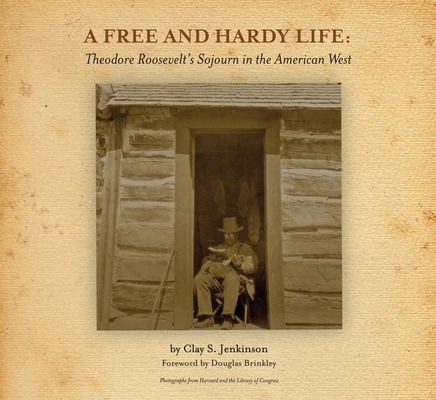
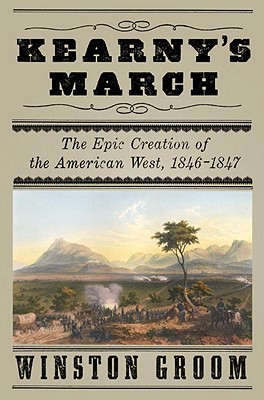

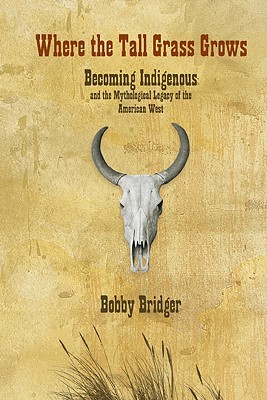
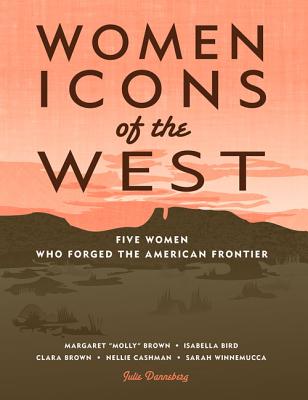
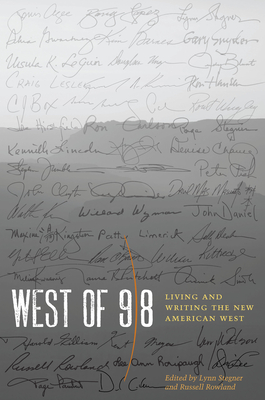
No comments:
Post a Comment